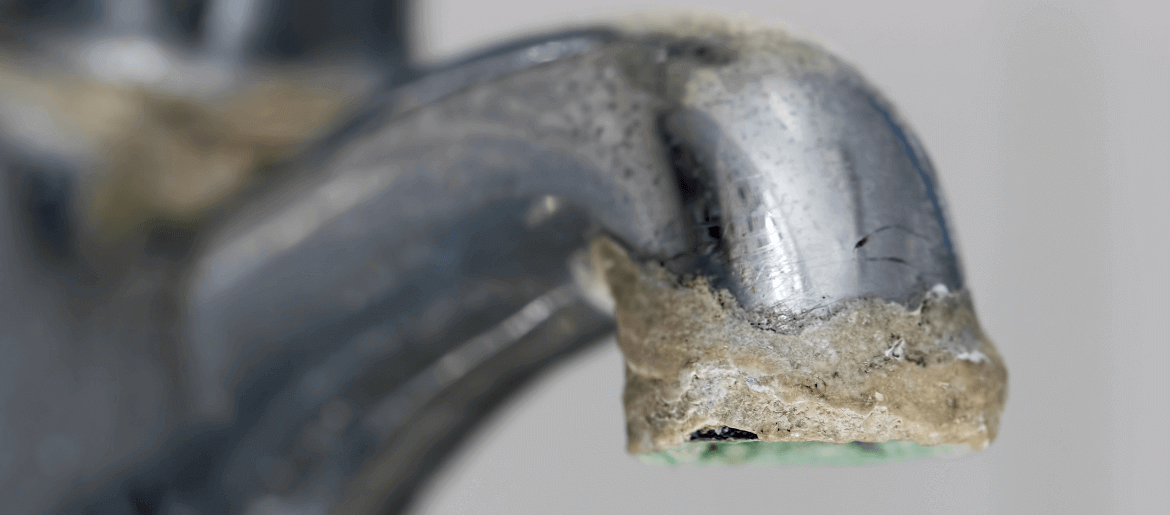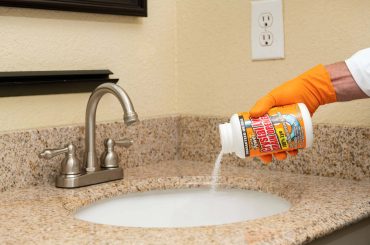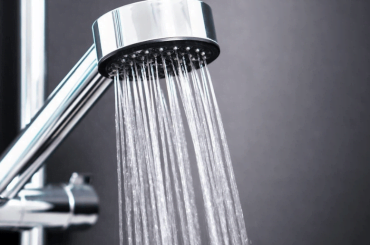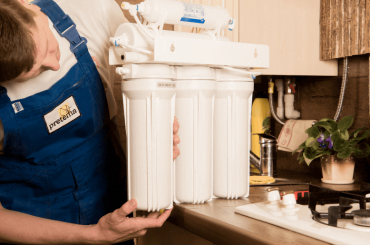Water calcium deposits are a common problem in households with hard water. These deposits can be unsightly and difficult to remove. They often form on showerheads faucets and other fixtures and can be difficult to remove.
While usually not harmful these deposits can cause problems if left unchecked. Luckily, several methods can be used to get rid of them.
In this blog post, we will outline three methods for removing water calcium deposits and provide tips for each one. Keep reading to learn more!
How To Remove Water Calcium Buildup?
Water calcium deposits are hard crusty build-ups that form on the walls of water pipes. They are caused by a combination of poor water treatment and sediment buildup in pipes. If not properly treated and maintained, water calcium deposits can lead to reduced water flow and even pipe blockages.
Fortunately, there are several ways to prevent or treat water calcium deposits. The most effective strategy is to improve water treatment by adding chemicals that prevent the buildup of sediment in pipes.
This can be done through regular maintenance checks and adjustments, as well as by periodically flushing pipes to remove existing deposits.
If you are experiencing water calcium deposits in your home or business, it may be a good idea to seek professional help.
Remove water calcium deposits from the shower?
Several methods can be used to remove water calcium deposits from your shower.
- One option is to use a vinegar soak which involves placing the affected area in a bowl or bucket filled with warm vinegar for several hours. This will help loosen and dissolve the deposits, making them easier to scrub away.
- Another approach is to use a pumice stone or other abrasive scrubber. This can help remove smaller, more stubborn deposits and may be preferable if you want to avoid using chemicals in your shower.
- Finally, if the calcium deposits are causing serious clogs or damage to your showerhead, it may be necessary to replace them altogether. This can typically be done fairly easily, although it may require some basic plumbing skills and tools.
Regardless of the method you choose, it is always important to be patient and thorough when removing water calcium deposits from your shower.
Removing them completely can take time and a bit of elbow grease, but with the right tools and techniques, it is possible!
Remove water calcium deposits from faucets?
Calcium deposits can build up on your faucets and cause them to become clogged over time. This can be a big problem, especially if you have multiple faucets in your home or office.
Fortunately, there are several steps that you can take to help remove these deposits from your faucet.
1. Commercial Cleaner
One of the first things that you can do to remove water calcium deposits from your faucets is to apply a commercial cleaner or cleaning agent. There are many varieties of commercial cleaners on the market, including ones that are specifically designed to clean calcium deposits from faucets.
This type of cleaner will usually contain citric acid, which helps to break down the deposits and remove them from your faucets.
2. Use a soft cloth or abrasive pad
To further help remove calcium deposits from your faucets, you can try using a soft cloth or abrasive pad in conjunction with the cleaning agent. Gently rub the cloth or pad over the deposits on your faucets to help break them down and loosen them.
This can be a more time-consuming process but it can be effective if done regularly.
3. Use vinegar or lemon juice
In addition to using cleaning agents and cloths or pads, you can also try other natural remedies for calcium deposits. For example, some homeowners have found success using vinegar or lemon juice on their faucets.
Simply soak a soft cloth in either of these liquids and then rub it over the calcium deposits on your faucets to help loosen them.
Ultimately, the best way to remove water calcium deposits from your faucets will depend on several factors, such as the type of cleaner you are using and the severity of the deposits.
If you are having trouble getting rid of calcium deposits on your faucets, consider working with a professional to get expert advice and recommendations for removing them from your home or office.
Remove calcium seposits from the sink
One way to remove water calcium deposits from your sink is to use vinegar and water solution. Simply mix equal parts of vinegar and water in a bowl and apply it to the affected area with a clean cloth.
Let the solution sit for a few minutes before rinsing it away with warm water. You may need to repeat this process a few times to completely remove the deposits.
Remove water calcium deposits from the dishwasher
If your dishwasher has calcium deposits, you can remove them by using a vinegar solution. Pour one cup of white vinegar into a bowl and place it on the top rack of your dishwasher.
Run the dishwasher on the hottest setting to remove the calcium deposits. You may need to repeat this process a few times to completely remove the deposits. Keep in mind that vinegar is a strong acid and can damage some surfaces.
If you are concerned about damaging your dishwasher, you can try using a diluted vinegar solution or a different cleaning method.
Remove water calcium deposits from the washing machine
You can remove water calcium deposits from your washing machine by following these steps:
- Fill the washing machine with hot water. Add 1 cup of vinegar or lemon juice for every gallon of hot water.
- Let the mixture sit in the washing machine for 30 minutes to 1 hour.
- Drain the washing machine and run a cycle with hot water to rinse.
- If the calcium deposits are still present, repeat steps 1-3 until they are removed.
FAQs – Calcium Buildup Removal
How do you remove calcium particles from water?
One way to remove calcium particles from water is to use a water filter. There are many different types of water filters on the market, so you will need to choose one that is specifically designed to remove calcium particles.
Another way to remove calcium particles from water is to let it sit for 24 hours. This will allow the heavier calcium particles to settle to the bottom of the container so you can pour off the calcium-free water.
How do you get hard water deposits off?
There are a few ways that you can get hard water deposits off of your surfaces. You can use vinegar and water solution to soak the area and then scrub it with a brush.
You can also use a store-bought cleaner that is specifically made to remove hard water deposits. Whichever method you choose make sure that you rinse the area well afterward to remove any residual cleaner.
Does WD-40 remove calcium deposits on faucets?
WD-40 can remove calcium deposits on faucets. Simply spray WD-40 onto the affected area and let it sit for a few minutes. Then use a brush to scrub away the calcium deposits. Rinse the area well afterward to remove any residual WD-40.
How long should you soak a faucet in vinegar?
You should soak a faucet in vinegar for 30 minutes to 1 hour. This will allow the vinegar to break down the calcium deposits. Soak the object in hot water then use a brush to scrub away any remaining deposits. Make sure to rinse the area thoroughly afterward to remove any traces of vinegar.
How do I prevent calcium buildup in my pipes?
One way to prevent calcium buildup in your pipes is to use a water softener. A water softener will remove minerals from your water that can cause buildup, including calcium.
You can also try running vinegar through your pipes once a month to help dissolve any build-up that has already occurred. If you have severe calcium buildup, you may need to have your pipes professionally cleaned.
Final Thought:
If you are experiencing water calcium deposits, we hope the tips in this blog post have been helpful. It is important to remember that prevention is key and regular maintenance of your plumbing system will help keep these pesky deposits at bay.
If you do find yourself with a build-up, however, don’t worry. There are several ways to remove them and get your faucet looking good as new. Try one of the methods we’ve outlined in this blog post and let us know how it goes!





